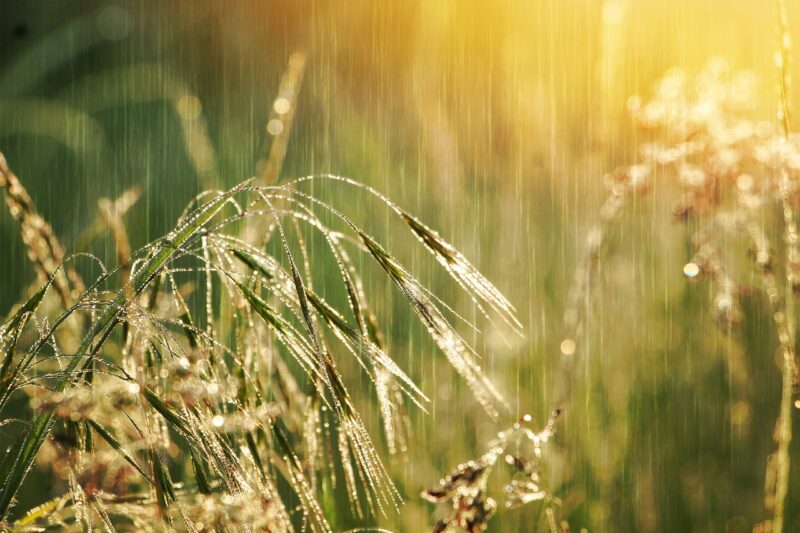How Rainfall Measurements Guide Farmers and Water Resource Managers
November 12, 2024

Rainfall is one of the most critical factors influencing agriculture and water resource management. Accurate measurements of precipitation not only guide farmers in planning their planting and irrigation schedules but also help water resource managers allocate water efficiently. Understanding rainfall patterns is essential for assessing drought risks, managing water supplies, and making informed decisions for sustainable development.
1. The Importance of Rainfall Measurements
Rainfall measurements provide vital data that informs various agricultural and water management practices. These measurements can help in:
- Crop Management: Farmers rely on rainfall data to decide when to plant seeds and how much irrigation is needed. Inconsistent rainfall can lead to over or under-irrigation, affecting crop yield.
- Drought Prediction: Understanding rainfall patterns allows for better forecasting of droughts. This helps in preparing for adverse weather conditions, thereby minimizing losses.
- Water Allocation: Water resource managers use rainfall data to direct water through reservoirs and distribution systems efficiently, ensuring that agricultural and municipal needs are met.
- Research and Development: Comprehensive rainfall data can help researchers develop better crop varieties that are more resilient to changing weather patterns.
The effective use of rainfall measurements can help improve food security and ensure sustainable water resource management.
2. Tools for Measuring Rainfall
Technological advancements have made it easier to measure rainfall accurately. Below are some common tools used for measuring precipitation:
- Rain Gauges: The most common tool consists of a container that collects rainwater. The amount of water collected is then measured using a scale. Rain gauges can be manual or automated, with some digital versions even connected to the internet for real-time data collection.
- Weather Radars: Modern weather radars can detect precipitation in the atmosphere and estimate rainfall intensity and duration over large areas. This is particularly useful for predicting rainfall events far in advance.
- Remote Sensing: Satellites equipped with sensors can collect data on cloud cover and moisture levels, allowing for real-time tracking of rainfall patterns globally. This data can be analyzed for better forecasting and resource management.
- Rainfall Monitoring Networks: Many regions have established networks of rain gauges that feed into a central database. These networks help in analyzing rainfall trends over time and making informed management decisions.
Through these tools, farmers and water resource managers can access up-to-date rainfall information that impacts their decisions.
3. Rainfall Data Analysis
Collecting rainfall data is important, but analyzing this data is what drives actionable insights. Here are crucial elements involved in rainfall data analysis:
- Historical Data Analysis: Analyzing past rainfall records allows farmers and resource managers to identify trends and patterns, which aids in long-term planning and risk assessment.
- Statistical Models: Advanced statistical models and simulations can help predict future rainfall events based on historical data, weather patterns, and climate models.
- Geospatial Analysis: Geographic Information Systems (GIS) can visualize rainfall data for specific regions, helping understand the distribution and variation of precipitation across areas, which is crucial for localized decision-making.
By analyzing rainfall data, agricultural producers and water managers can optimize their strategies and interventions, tailor their practices according to environmental conditions, and improve efficiency.
4. Impact on Crop Management
Rainfall measurements are foundational in the agricultural sector. Here’s how they impact crop management:
- Timing of Planting: Using rainfall data helps farmers determine the optimal time to plant crops. For instance, planting right before a rainy season can ensure sufficient moisture for seed germination.
- Irrigation Planning: Accurate rainfall measurements inform farmers about how much additional water to supply through irrigation, thereby saving water and reducing costs.
- Pest and Disease Management: Certain pests and diseases thrive under specific rainfall conditions. By monitoring rainfall, farmers can anticipate these issues and take preventive measures.
- Harvest Timing: Rainfall data helps farmers predict optimal harvest times, balancing moisture levels for optimal crop quality and minimizing losses due to adverse weather conditions.
The right rainfall data can maximize crop yield, minimize losses, and boost profitability for farmers.
5. Rainfall Measurements and Water Resource Management
Water resource managers utilize rainfall measurements to efficiently distribute and conserve water resources. Below are key aspects of how rainfall impacts water management:
- Reservoir Management: Forecasting rainfall can inform water level management in reservoirs, thereby preparing for heavy rainfall events and ensuring adequate supply during dry spells.
- Groundwater Recharge: Understanding rainfall patterns helps evaluate how much groundwater may be replenished and whether additional recharge projects are needed.
- Flood Management: Measuring rainfall intensity and duration is crucial for predicting potential flooding events, allowing for timely evacuations and infrastructure preparedness.
- Drought Planning: Consistent rainfall measurements can aid in the development of drought contingency plans, ensuring that water is allocated appropriately during dry spells.
Effective rainfall measurement and management can lead to sustainable water usage, minimizing wastage and ensuring long-term resource viability.
6. Conclusion
In conclusion, rainfall measurements are essential for guiding farmers and water resource managers. They support informed decision-making in agricultural practices and ensure sustainable water management. Accurate and timely measurement of rainfall patterns allows for better preparedness for extreme weather events, ultimately enhancing food security and water conservation. As technology advances, integrating rainfall data into decision-making processes will become even more vital to address the challenges of climate change and increasing demand for water resources in the future.








